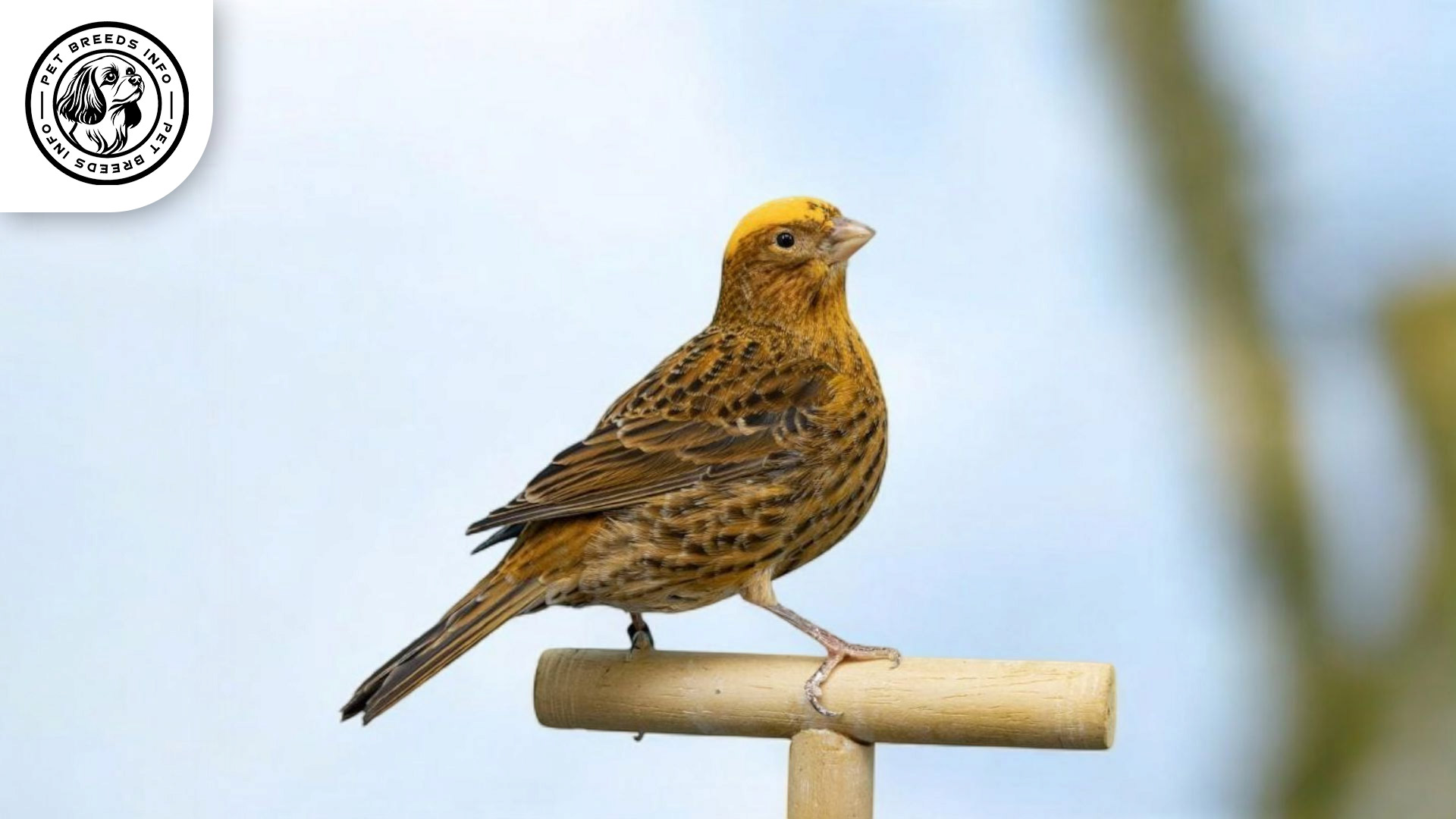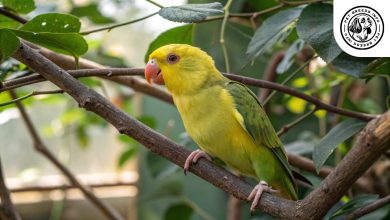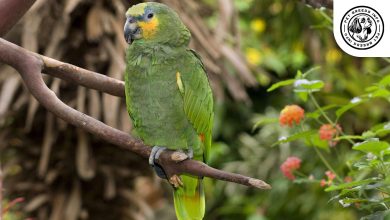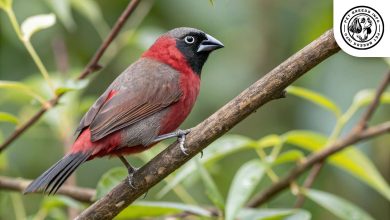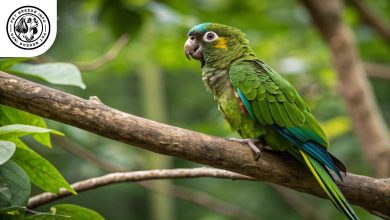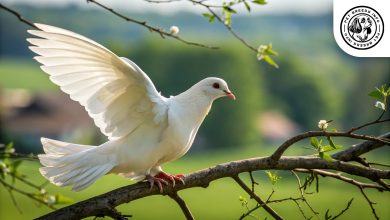Lizard Canary Breed: Personality, Lifespan, Food & Care
General Introduction of the Breed
The Lizard Canary, known as “Canari Lizard” in French, is a unique and visually striking breed of domestic canary (Serinus canaria domestica). This breed is renowned for its distinctive scale-like feather markings, which give it a reptilian appearance.
The Lizard Canary originated in France during the 18th century and was later perfected by British breeders. Over time, it became one of the most sought-after canary breeds due to its rare and intricate feather patterns.
Table of Contents
| Common Name | Lizard Canary |
| Scientific Name | Serinus canaria domestica |
| Origin | France and Britain |
| Size | 13–14 cm (5.1–5.5 inches) |
| Lifespan | 8–10 years |
| Colors | Gold, silver, blue |
| Talking Ability | Low; melodious singing ability |
| Noise Level | Moderate |
| Social Behavior | Energetic, social, mildly territorial |
Physical Characteristics
The Lizard Canary is a small songbird, typically measuring around 13 to 14 cm (5.1 to 5.5 inches) in length.
One of its most striking characteristics is its unique feather pattern, which resembles the scales of a lizard. It comes in different color variations, including gold, silver, and blue.
Its eyes are dark and round, giving it a sharp and attentive expression.
This breed has small, well-formed ears that are usually hidden beneath its feathers, while its tail is short and slightly fanned.
The signature “cap” on its head can be clear (non-melanistic) or dark (melanistic), contributing to its distinctive appearance.
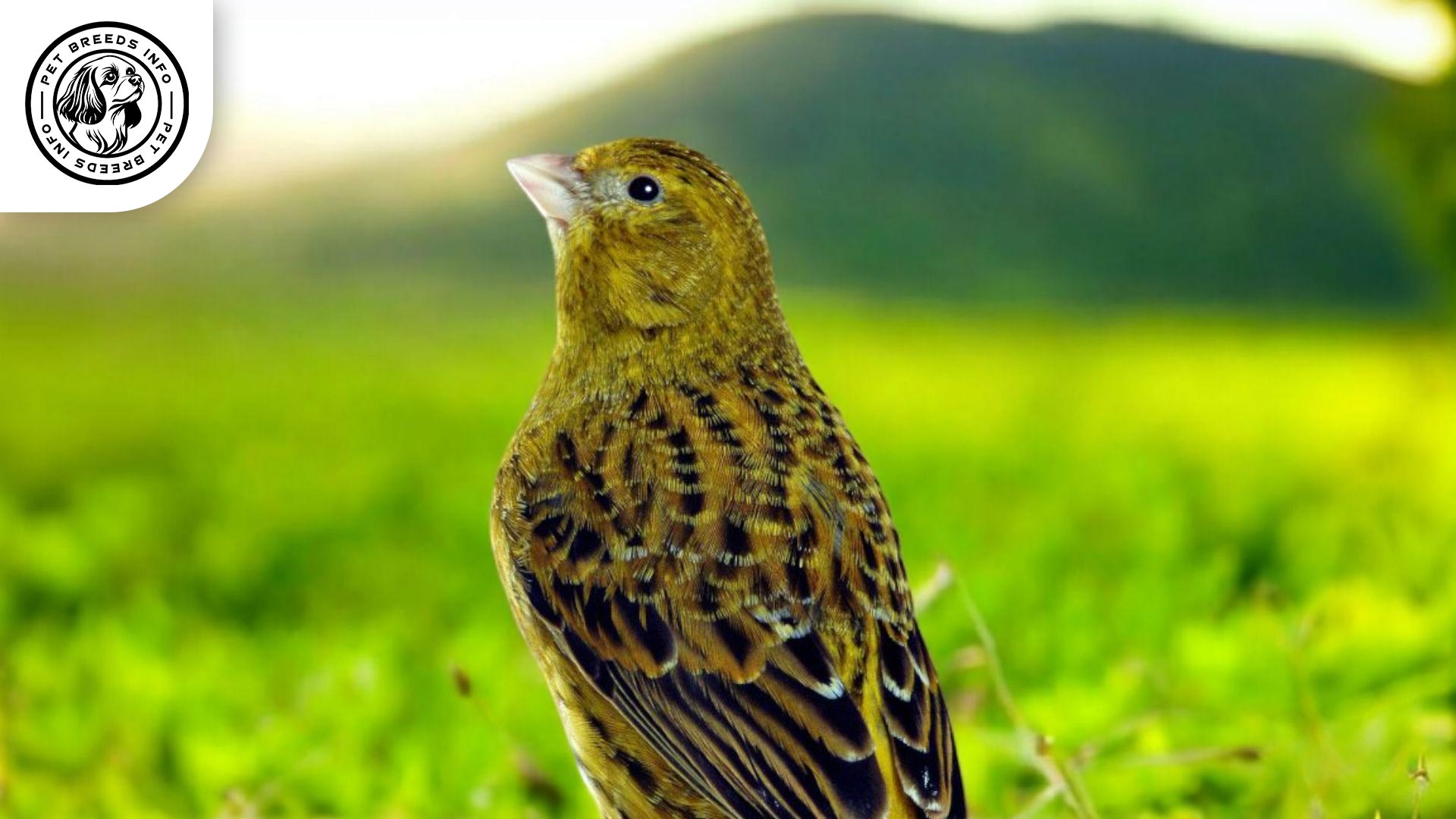
Personality and Temperament
The Lizard Canary is known for its lively and energetic nature. It enjoys singing and has a melodious voice, making it a popular choice among bird enthusiasts.
It is relatively independent but forms a mild attachment to its owners. While not particularly affectionate, it enjoys interacting with its environment and observing people.
This breed is social and can cohabitate peacefully with other canaries, though it may show slight territorial tendencies.
Due to its active nature, it appreciates having ample space to fly and explore within its cage.
Care and Maintenance Requirements
The Lizard Canary requires regular exercise, so a spacious cage with perches and room for flight is ideal.
It thrives in indoor environments but should be placed away from direct sunlight, drafts, and extreme temperatures.
Grooming requirements are minimal. It molts yearly, so providing a balanced diet during this period is essential.
Read More: Green-winged Pytilia Bird
Routine hygiene includes keeping its cage clean, providing fresh water daily, and occasionally bathing the bird with a shallow dish of lukewarm water.
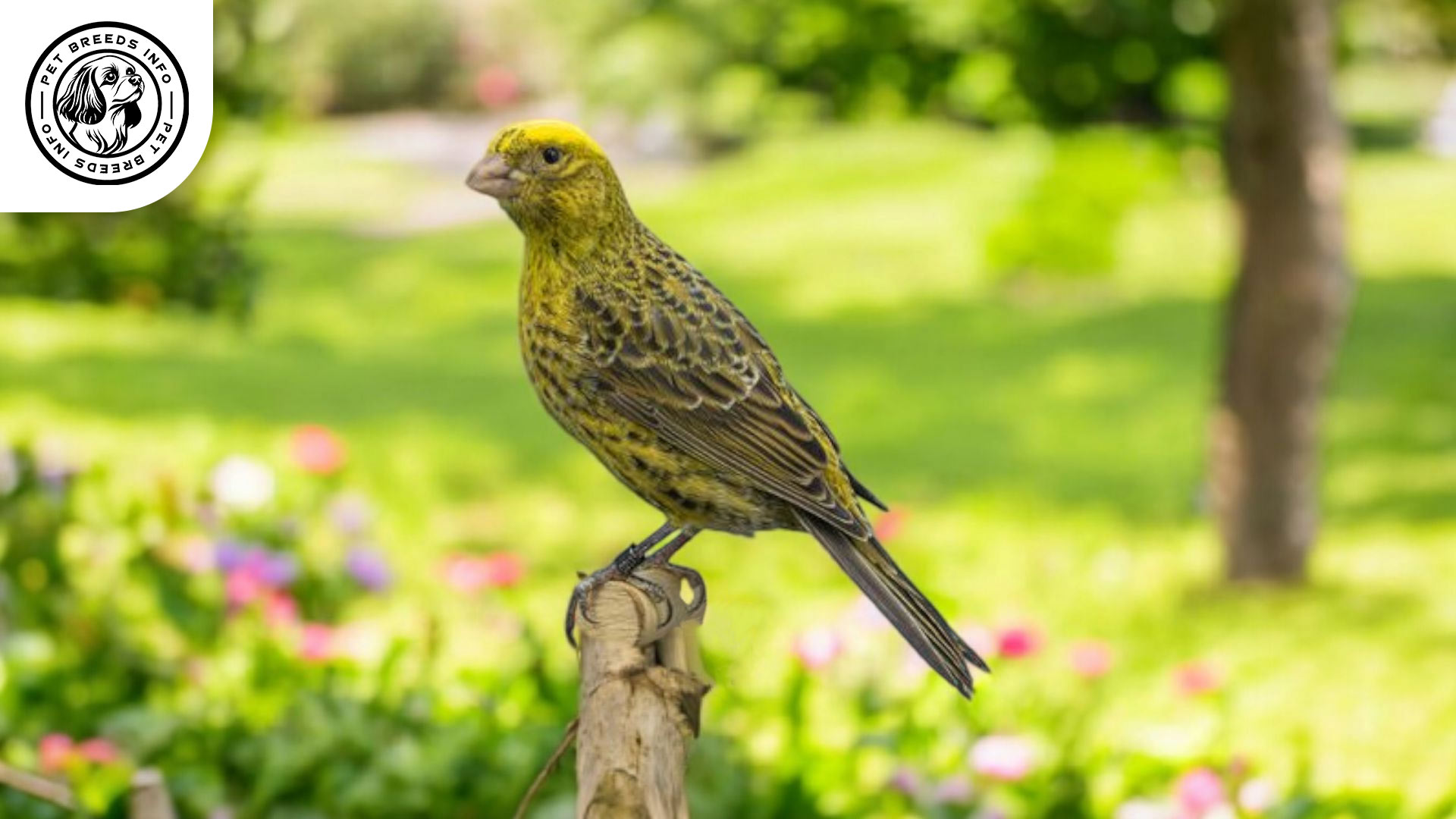
Diet and Nutrition
The Lizard Canary thrives on a balanced diet of high-quality canary seed mix supplemented with fresh fruits and vegetables.
Soft foods like egg food can be provided during the molting or breeding season.
Avoid feeding avocado, chocolate, caffeine, and salty or sugary foods, as they can be toxic to birds.
Fresh water should always be available, and cuttlefish bone or mineral blocks help maintain beak and bone health.
Health and Common Medical Issues
The Lizard Canary is generally a hardy bird, but it can be prone to common avian ailments like respiratory infections, feather mites, and digestive issues.
Regular veterinary check-ups are recommended to monitor its health and prevent illnesses.
The average lifespan of a Lizard Canary ranges from 8 to 10 years with proper care.
Vaccinations are not typically required, but good hygiene and a clean living environment help prevent diseases.
Read More: Grosbeak Weaverfinch
Training and Behavior Management
Training a Lizard Canary is relatively simple. It can learn to recognize voices and respond to consistent feeding and handling routines.
Early socialization helps it become more confident in human interactions.
To encourage singing, play soft music or introduce them to recordings of other canaries.
Positive reinforcement, such as treats or gentle talking, helps establish a bond and reinforce good behavior.
Interaction with Other Animals and Humans
The Lizard Canary is a good companion for bird lovers but does not require constant human interaction.
It can live peacefully with other canary breeds but should be monitored for aggressive behavior, especially during breeding seasons.
This breed is more suitable for individuals or families looking for a low-maintenance pet rather than one that demands frequent handling.
It demonstrates a moderate level of independence while still enjoying stimulation from sound and movement in its environment.
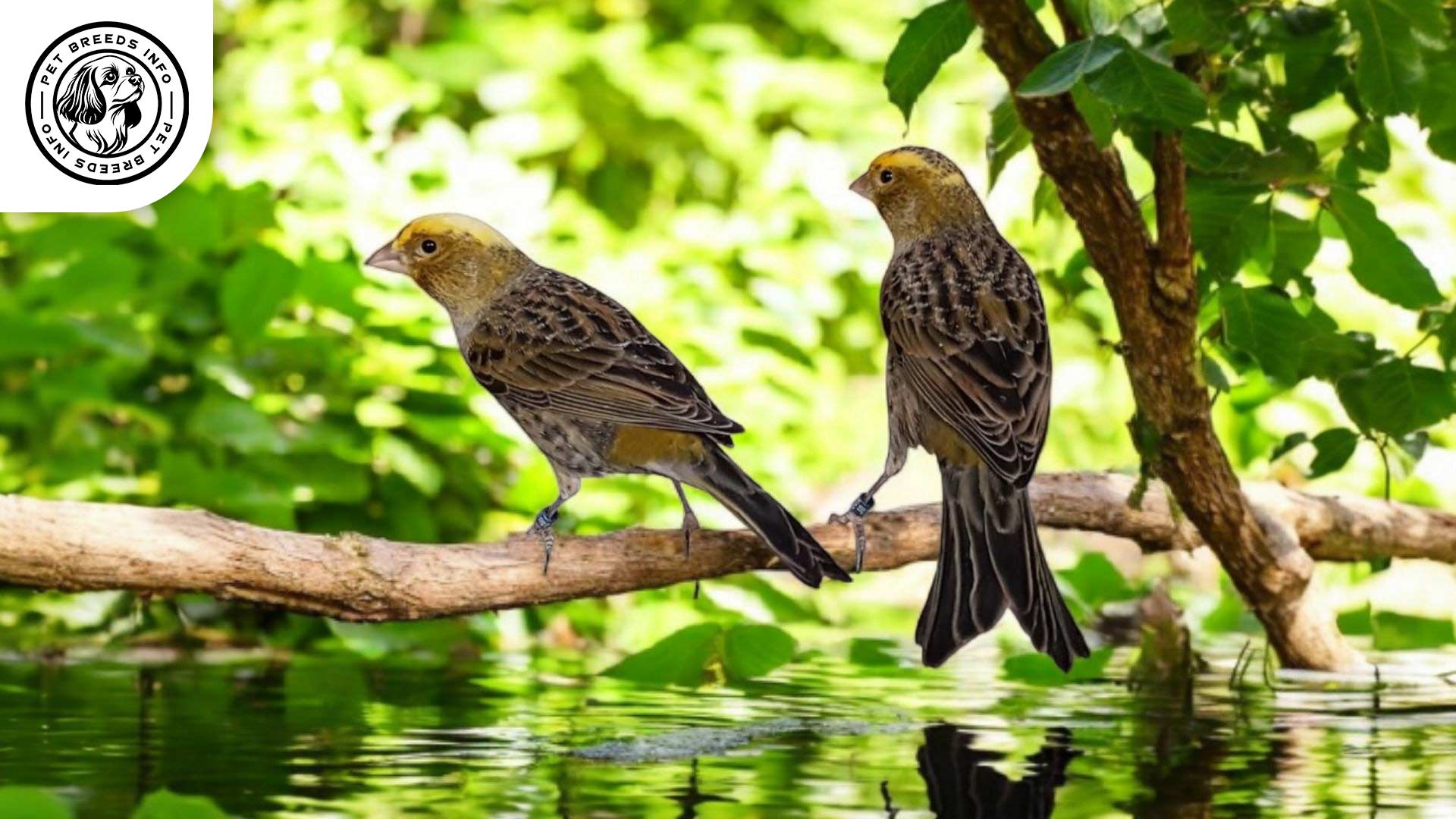
Price and Availability
The average cost of a Lizard Canary ranges from $50 to $150, depending on the breeder, color quality, and availability.
If purchasing from a breeder, it is important to choose a reputable one who can provide health records and genetic background information.
Adopting from bird shelters or avian rescues is another ethical option for acquiring a Lizard Canary.
Conclusion and Final Thoughts
The Lizard Canary is a visually stunning and low-maintenance pet, making it ideal for bird enthusiasts seeking a melodic companion.
Read More: Lancashire Canary
It is best suited for individuals or families who appreciate birds but do not require a highly interactive pet.
Before acquiring a Lizard Canary, potential owners should ensure they have a suitable environment free from extreme weather conditions and predators.
Overall, this breed is a marvelous addition for those who admire canaries and enjoy listening to their soothing songs.
FAQ
What makes the Lizard Canary unique among canary breeds?
Its distinctive scale-like feather markings give it a striking “lizard-like” appearance rarely found in other birds.
Is the Lizard Canary good for beginner bird owners?
Yes, it is low-maintenance, hardy, and adapts well to indoor environments, making it suitable for beginners.
Can Lizard Canaries live with other birds?
They can coexist with other canaries but should be monitored during breeding season for territorial behavior.
How do I maintain the health of a Lizard Canary?
Provide a clean cage, balanced diet, access to fresh water, and routine vet check-ups to ensure good health.
What should I feed a Lizard Canary?
A mix of high-quality canary seeds, fresh fruits, vegetables, and occasional egg food during molting or breeding seasons.
